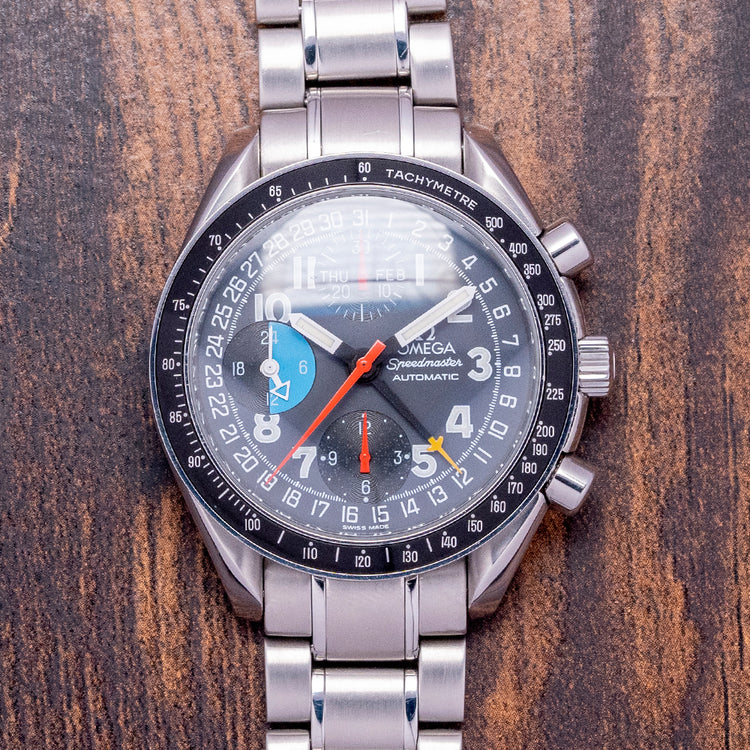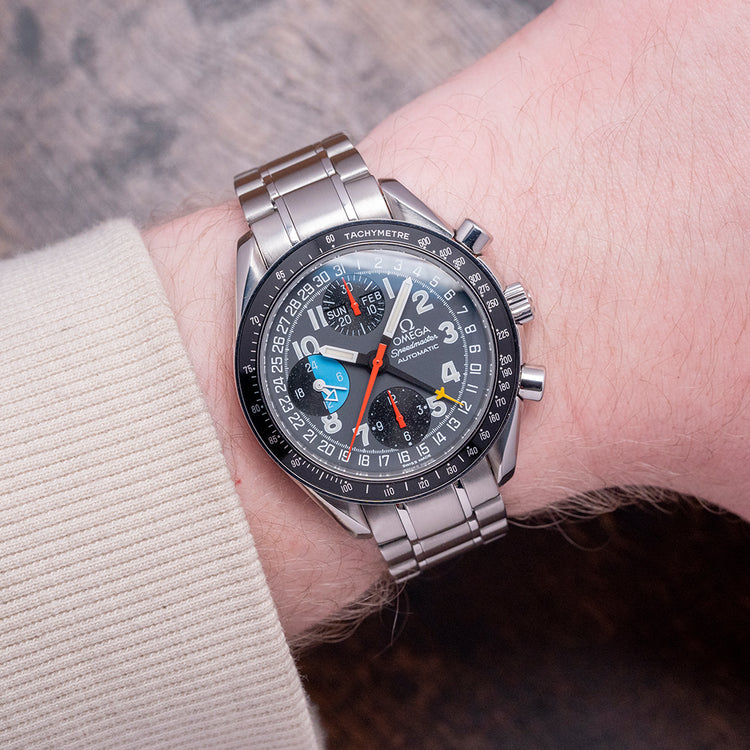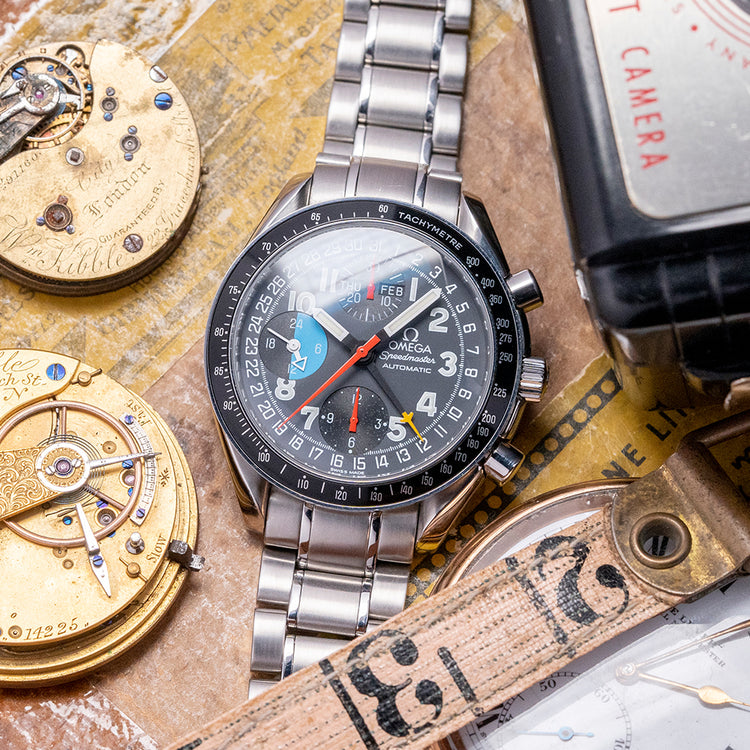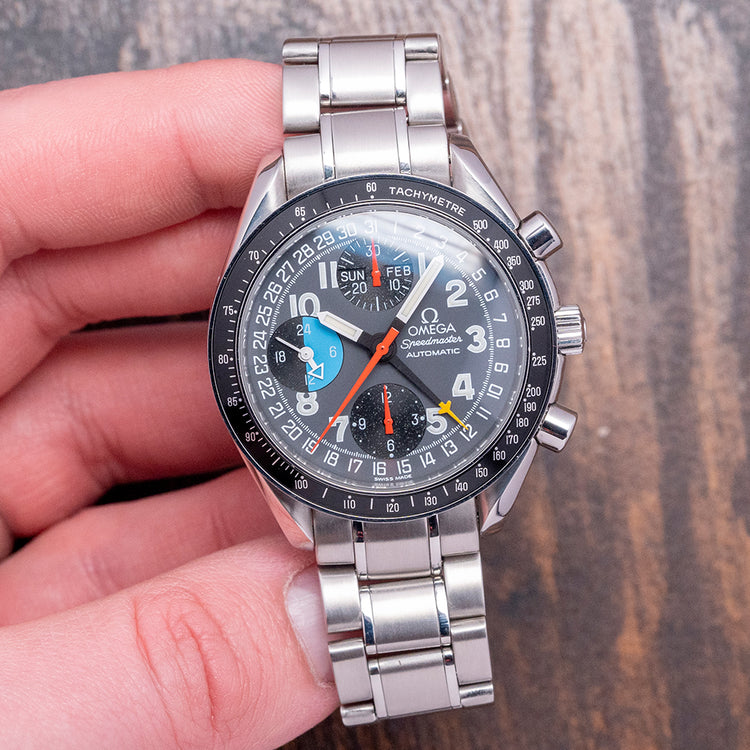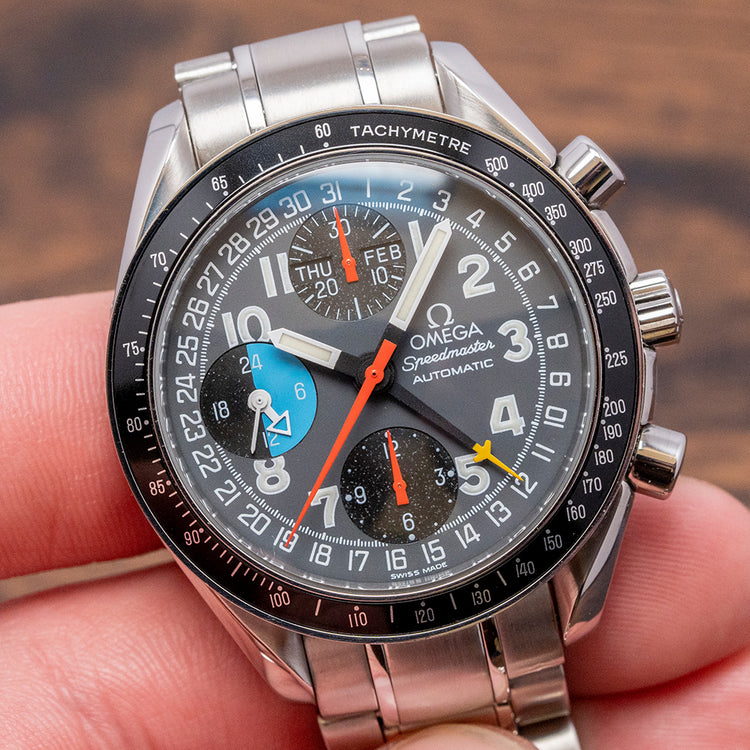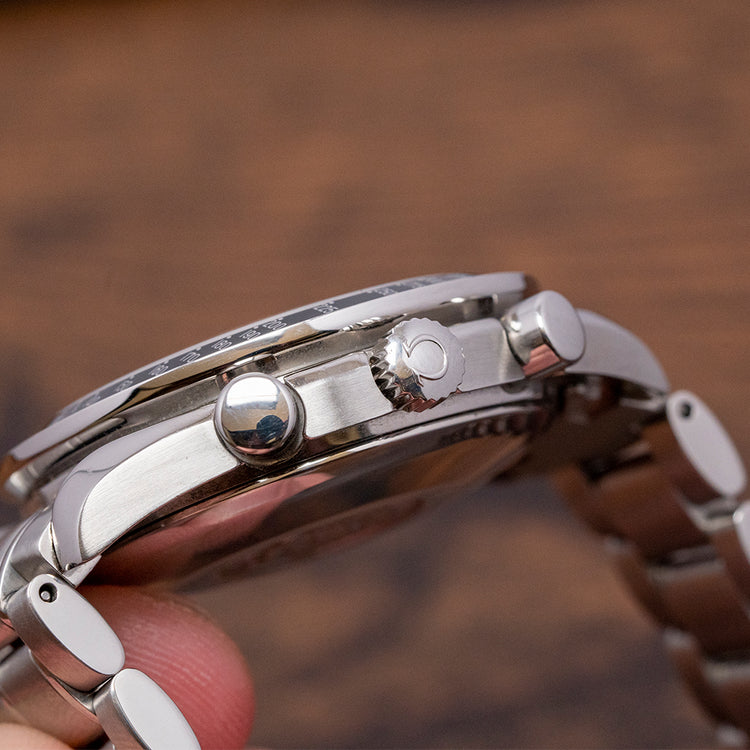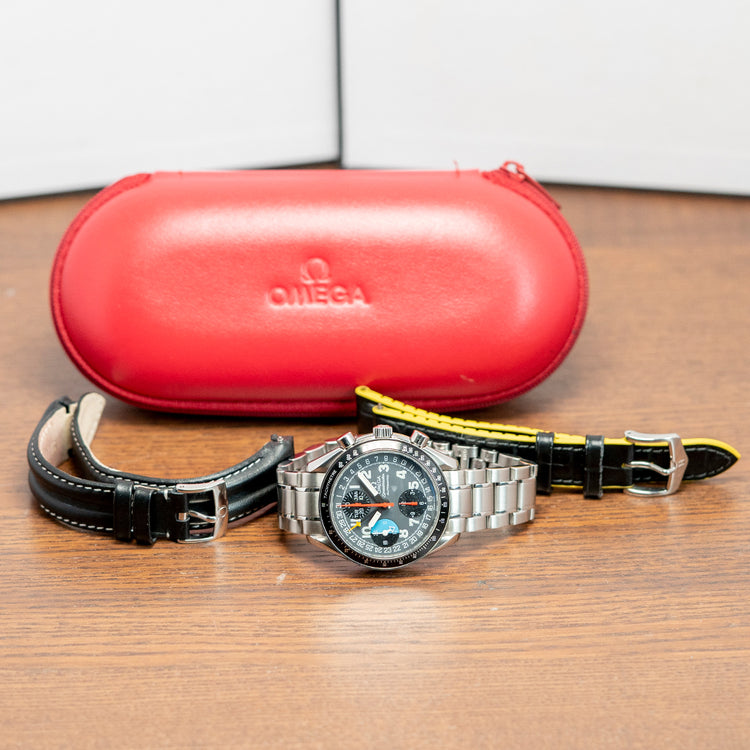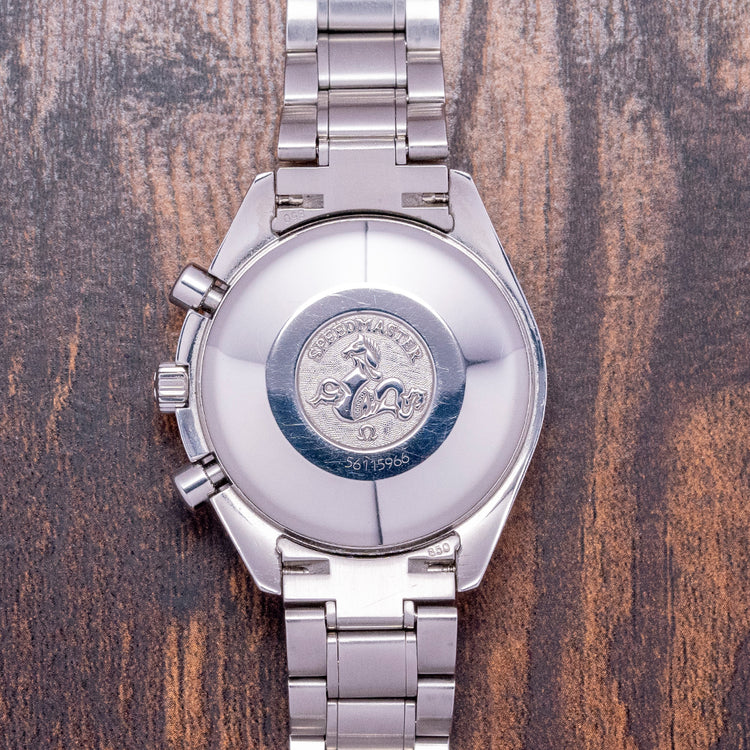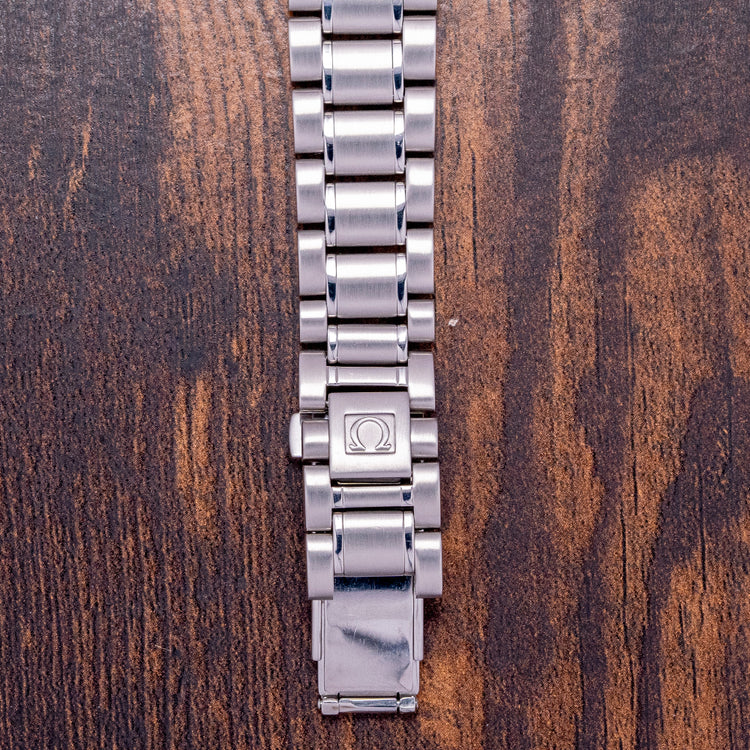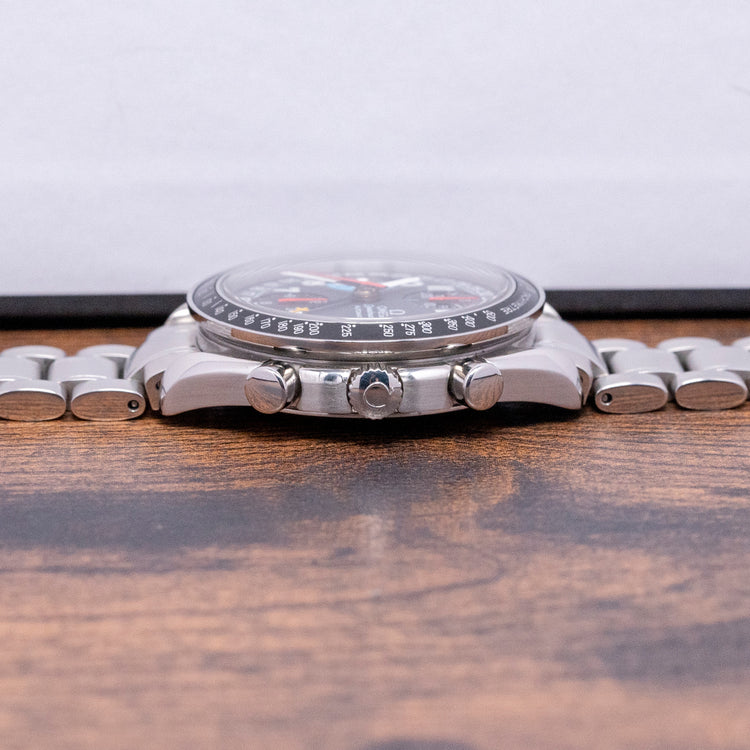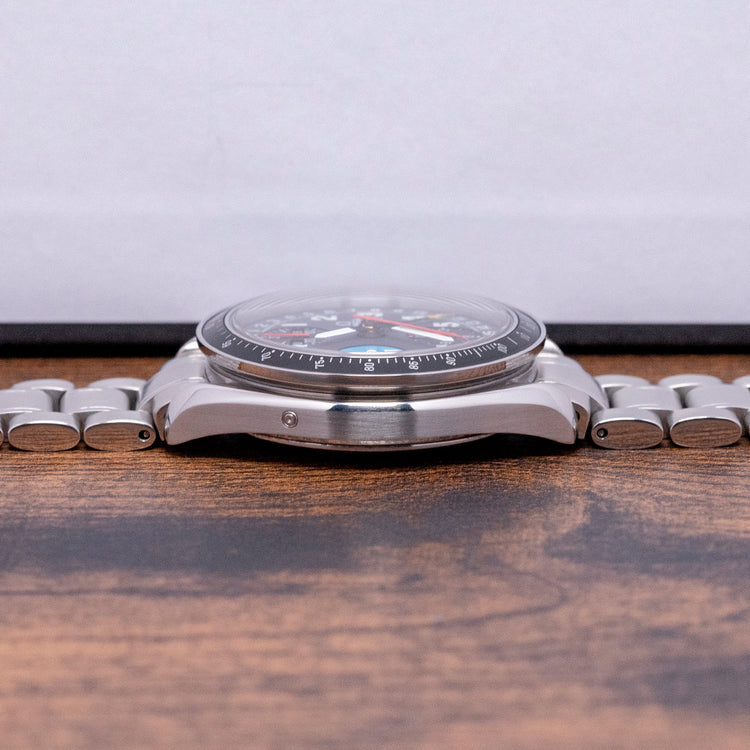More Information
Description
More
Less
Here we have a 1990s Omega Speedmaster MK40 Triple-Date Automatic with a 39mm polished and satin-finished case that fits snuggly on the wrist thanks to the characteristic twisted lugs, its curved flanks lead to a lug-to-lug length of 44.5mm and a case thickness of 13.5mm ensures a comfortable fit. Down the right side, we have the chronograph pushers and a signed crown in the centre. The fixed stainless steel bezel has a black aluminium Tachymetre insert with silver numerals. The domed crystal protects a matte grey dial, a date outer track with its indicator hand ending in a yellow-tipped jet pointer showing the correct date. Applied Arabic indexes indicate the hours coated in luminescence; we have three sunken dials: a 30-minute dial that incorporates the Day and Month at 12 o’clock, followed by a 12-hour dial at 6 o’clock, and finally, a 24-hour dial at 9 o’clock with blue and black indicating night and day, perfect for the intrepid explorer or executive travelling around the world. Sword hands filled with lume and a red chronograph hand complete a very elegant dial, a screw-down case back complete with the Hippocampus, inside an automatic Omega Cal. 1151, 25 jewels, 28,800 beats per hour. It comes paired with its 18mm Omega polished and brushed stainless steel bracelet secured by a signed deployant clasp and will fit up to a 6.9-inch wrist, plus its original 18mm Omega leather strap and pin buckle. The watch comes with its Omega pouch.
Points of Mention
More
Less
Personal Note
More
Less
Specification
More
Less
Movement : Automatic Omega Cal. 1151
Age : Circa. 1990s
Year : Circa. 1990s
Case Size : 39mm
Case Thickness : 13.5mm
Lug to Lug : 44.5 mm
Lugs : 18mm
Condition : Pre-Owned
Box and Papers : Omega Pouch
Case Material : Stainless Steel
Warranty : 12-Months NON-Waterproof Warranty
The wrist model's wrist size is 7inch
About Omega
More
Less
Description
Here we have a 1990s Omega Speedmaster MK40 Triple-Date Automatic with a 39mm polished and satin-finished case that fits snuggly on the wrist thanks to the characteristic twisted lugs, its curved flanks lead to a lug-to-lug length of 44.5mm and a case thickness of 13.5mm ensures a comfortable fit. Down the right side, we have the chronograph pushers and a signed crown in the centre. The fixed stainless steel bezel has a black aluminium Tachymetre insert with silver numerals. The domed crystal protects a matte grey dial, a date outer track with its indicator hand ending in a yellow-tipped jet pointer showing the correct date. Applied Arabic indexes indicate the hours coated in luminescence; we have three sunken dials: a 30-minute dial that incorporates the Day and Month at 12 o’clock, followed by a 12-hour dial at 6 o’clock, and finally, a 24-hour dial at 9 o’clock with blue and black indicating night and day, perfect for the intrepid explorer or executive travelling around the world. Sword hands filled with lume and a red chronograph hand complete a very elegant dial, a screw-down case back complete with the Hippocampus, inside an automatic Omega Cal. 1151, 25 jewels, 28,800 beats per hour. It comes paired with its 18mm Omega polished and brushed stainless steel bracelet secured by a signed deployant clasp and will fit up to a 6.9-inch wrist, plus its original 18mm Omega leather strap and pin buckle. The watch comes with its Omega pouch.
Points of Mention
Personal Note
Specification
The Brand
Enquire or Book an Appointment
Would you like to discover further details about this watch, or perhaps arrange an appointment to view and try it on? Complete this form and a member of our team will get back to you shortly.
You May Also Like


























